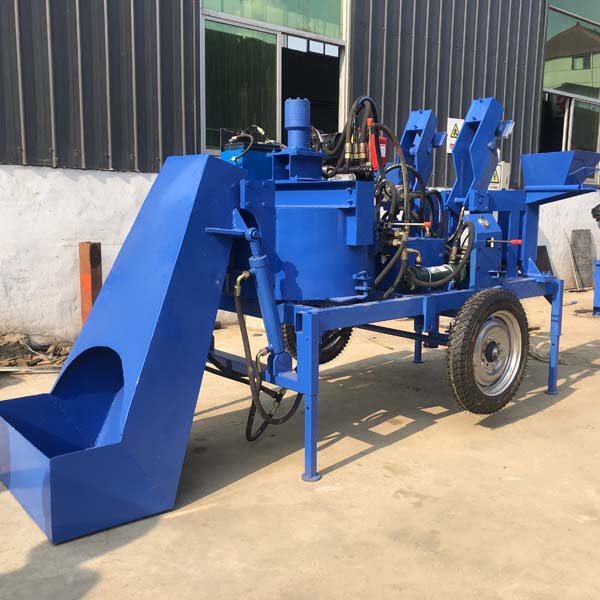
Image source Aiweibrickmachine
Community Engagement and Social Impact of Semi-Automatic Block Production
Semi-automatic block production plays a significant role in the construction industry, providing essential building materials for infrastructure and housing projects. Beyond its economic contributions, semi-automatic block production has a profound impact on the communities where it operates. This comprehensive exploration delves into the various dimensions of community engagement and the social impact of semi-automatic block production.
Section 1: Understanding Semi-Automatic Block Production
1.1 What Is Semi-Automatic Block Production?
Semi-automatic block production involves the use of machinery and technology to manufacture concrete or clay blocks, balancing automation with human oversight.
1.2 Importance in Construction
Semi-automatic block production contributes to the construction industry by supplying durable and cost-effective building materials, which are essential for various projects, from housing to infrastructure.
Section 2: Community Engagement and Local Partnerships
2.1 Collaboration with Local Suppliers
Semi-automatic block production often relies on local suppliers for raw materials such as aggregates, cement, and clay, fostering economic partnerships within the community.
2.2 Employment Opportunities
Block production facilities create jobs, providing employment opportunities for local residents and contributing to the economic growth of the community.
2.3 Skill Development
Workers involved in semi-automatic block production gain valuable skills, enhancing their employability and career prospects within the community.
Section 3: Social Impact on Communities
3.1 Affordable Housing
Semi-automatic block production contributes to the construction of affordable housing, addressing a critical need in many communities.
3.2 Infrastructure Development
Blocks produced through semi-automatic processes are used in infrastructure projects, including roads, bridges, and public buildings, improving community infrastructure.
3.3 Disaster Resilience
Semi-automatic block production aids in creating disaster-resilient structures, safeguarding communities from natural disasters.
3.4 Environmental Impact
Efforts to reduce the environmental impact of semi-automatic block production, such as sustainable sourcing and recycling, contribute to the overall well-being of communities.
Section 4: Sustainable Practices
4.1 Sustainable Sourcing
Sourcing raw materials responsibly and sustainably minimizes environmental harm and supports long-term community well-being.
4.2 Recycling and Waste Reduction
Implementing recycling practices and reducing waste in production benefit both the environment and the community.
4.3 Energy Efficiency
Efforts to reduce energy consumption in semi-automatic block production can lower operational costs and decrease environmental impact.
Section 5: Community Outreach and Development
5.1 Educational Initiatives
Semi-automatic block production facilities can engage with local schools and institutions to provide educational programs and opportunities for students interested in construction-related fields.
5.2 Community Projects
Participating in community development projects, such as building schools or community centers, demonstrates a commitment to the well-being of the community.
5.3 Health and Safety
Ensuring the health and safety of workers and the community at large is a vital aspect of responsible semi-automatic block production.
Section 6: Challenges and Solutions
6.1 Environmental Concerns
Addressing environmental concerns related to production processes and raw material sourcing requires sustainable practices and innovation.
6.2 Labor Practices
Fair labor practices, including fair wages and safe working conditions, are essential for the well-being of workers and the community.
6.3 Community Relations
Maintaining positive relations with the community and addressing any concerns or grievances is crucial for long-term sustainability.
Section 7: Case Studies
7.1 Habitat for Humanity
The partnership between semi-automatic block production facilities and organizations like Habitat for Humanity highlights the impact of affordable housing on communities.
7.2 Disaster Relief Efforts
Semi-automatic block production plays a pivotal role in disaster relief and reconstruction efforts, helping communities rebuild after calamities.
Section 8: Future Trends and Opportunities
8.1 Sustainable Innovation
Continued innovation in sustainable practices and materials will positively impact communities and the environment.
8.2 Technological Advancements
Leveraging advancements in technology, such as automation and digital tools, can improve production efficiency and quality, benefiting both the industry and communities.
Section 9: Conclusion
Semi-automatic block production is not merely an industrial process; it is a catalyst for community engagement and social impact. By fostering local partnerships, creating employment opportunities, and contributing to affordable housing, infrastructure development, and disaster resilience, semi-automatic block production plays an integral role in the well-being and progress of communities. The industry’s commitment to sustainability, responsible practices, and community outreach ensures that its impact continues to be a positive force for generations to come. As semi-automatic block production evolves, its potential to uplift and empower communities remains a cornerstone of its significance in the construction industry.
